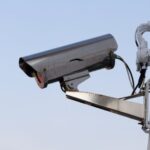
The New York Police Department has officially announced its facial recognition policy, laying out guidelines to which its officers must adhere.
In a statement, the NYPD emphasized that facial recognition technology is just one tool – albeit a useful one – in its police investigations, and not a determining agent in itself. “The NYPD has never arrested anyone on the basis of a facial recognition match alone – it is merely a lead in the investigative process,” the police service said.
The NYPD also laid out the specific scenarios in which officers can use facial recognition. These include situations in which an individual is has committed, is committing, or is about to commit a crime; or if an individual is thought to be a missing person, a victim, or a witness to criminal activity; or situations in which individuals are unable or unwilling to properly identify themselves. Police are also permitted to use the technology when there is “an imminent threat to health or public safety”, the NYPD’s statement indicated.
The guidelines suggest that the NYPD is not authorized to use facial recognition to surveil members of the public who are not thought to be involved in criminal activity, though it does seem to suggest that police can use facial recognition on any kind of surveillance video in the course of an investigation.
NYPD Commissioner James O’Neill has previously defended the agency’s use of facial recognition on similar grounds, arguing in a New York Times opinion article last year that the technology offers a “limited and preliminary step” in a human-driven investigative process.
In its latest statement, the NYPD emphasized that its guidelines are effective immediately, and are part of an effort to improve transparency and trust with respect to the police institution.
–
March 16, 2020 – by Alex Perala






Follow Us